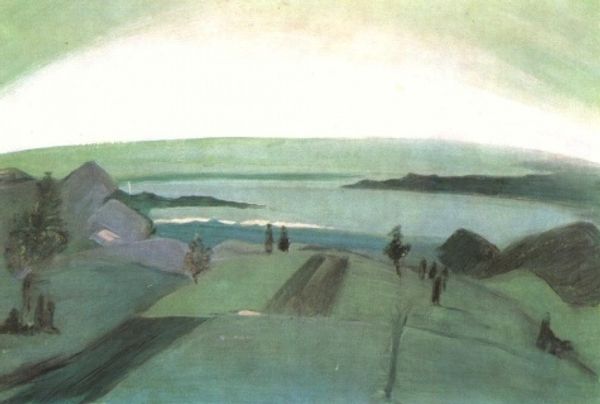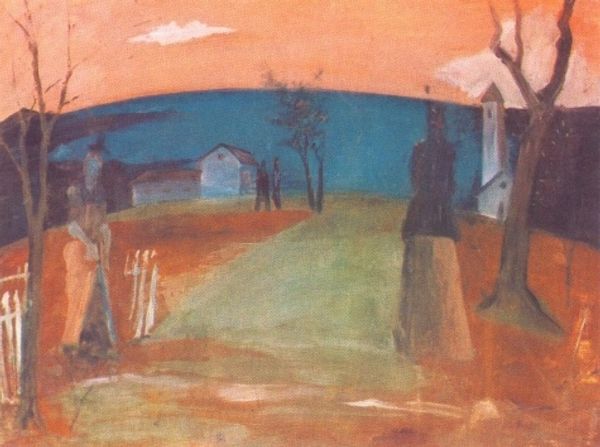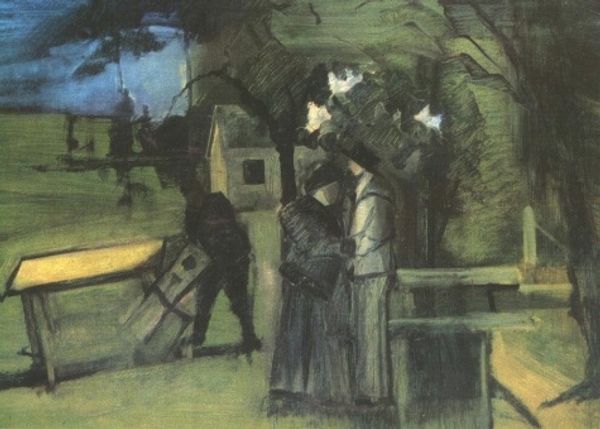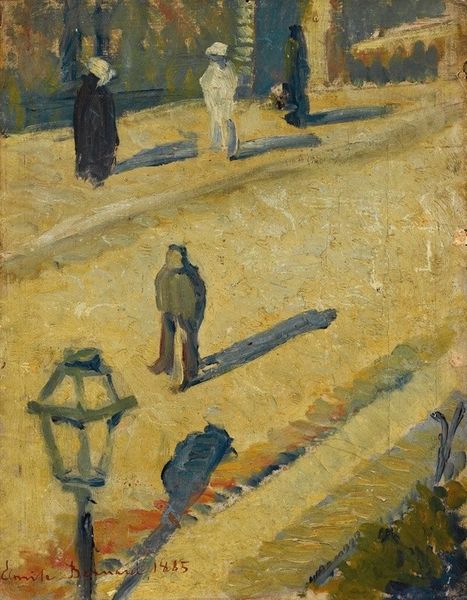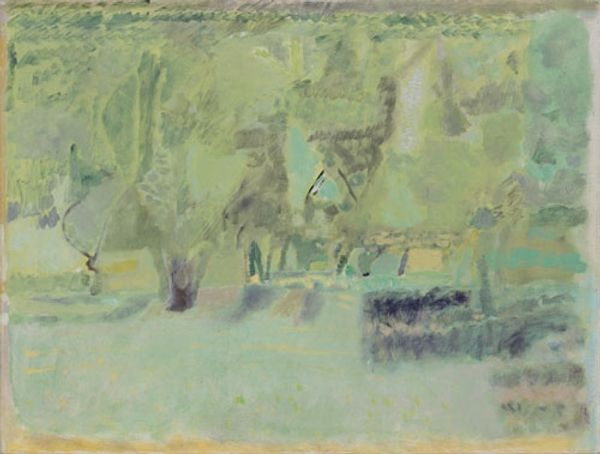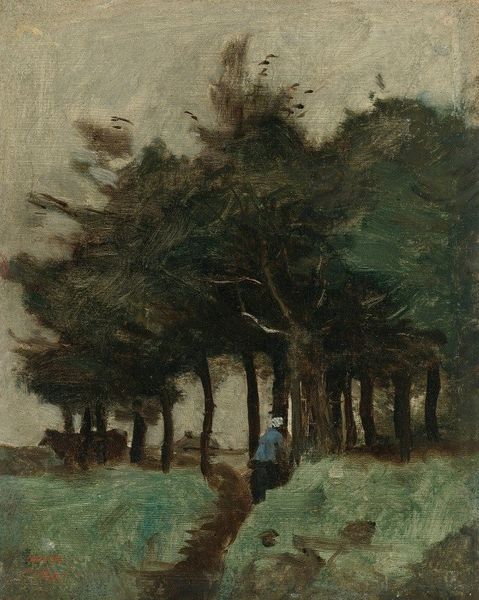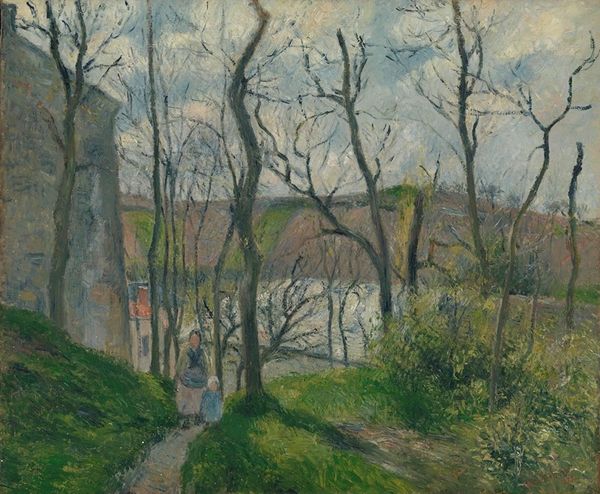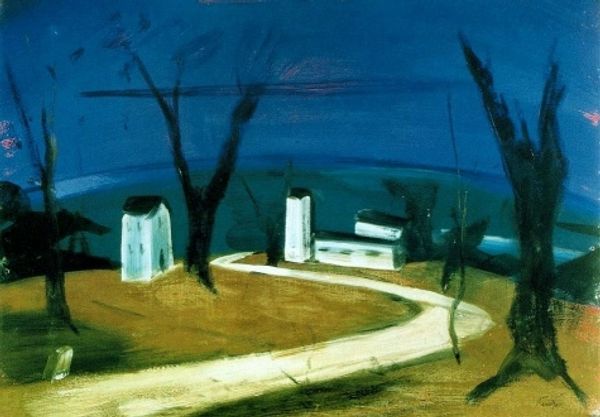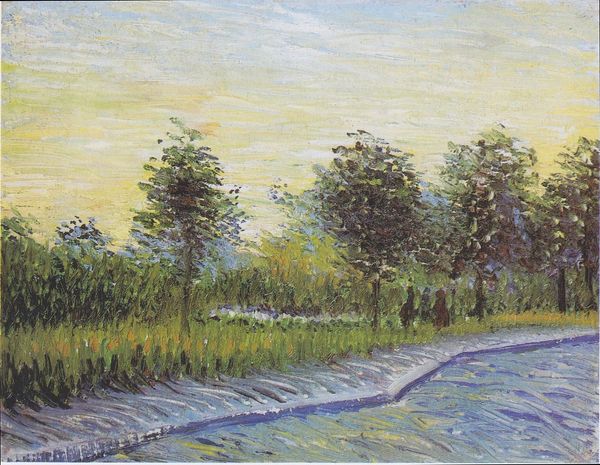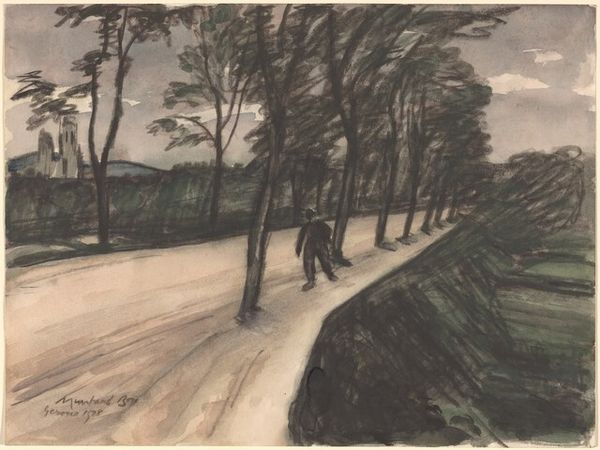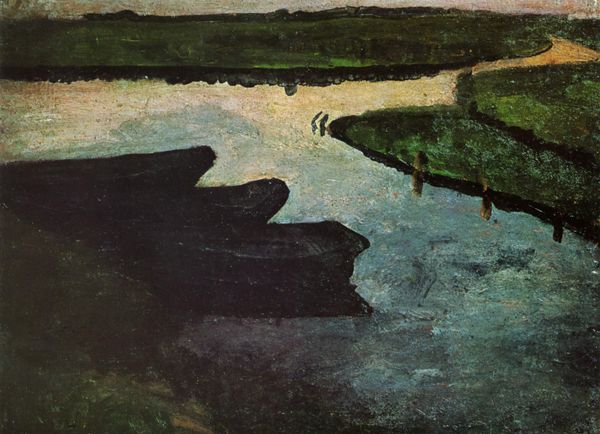
Copyright: Public domain
Curator: This is Istvan Farkas's "On the Hillside," a watercolor painting created in 1931. What's your first take on it? Editor: It feels dreamlike and melancholy. The figures are softly rendered, and the muted colors add to this contemplative mood. It seems heavy, subdued. Curator: Heavy indeed, which may come from Farkas’s artistic processes here, that are, in a way, in conversation with landscape traditions. It's all about the layering of watercolor—you can see how the paper itself becomes an active player, shaping the textures and edges of forms, especially the almost rudimentary house. I'm particularly interested in the repeated use of paint for both foliage and garments in each step. Editor: It definitely calls to mind larger conversations surrounding representation, especially during that era. It’s as if the women walking are carrying within their clothing a material trace of what’s beneath them—the earth and landscape become deeply internalized. Their very being, therefore, transcends gender. Curator: Right, which gets at a critical theme for him as well: Hungarian identity. Notice how this is conveyed through color selection and the rough handling of the watercolor medium to depict rural scenery and inhabitants during the interwar period. We also can think of watercolor in its directness—its inherent indexical nature—as a direct record of the landscape itself, an unmediated artistic moment that brings the viewer closer to a rural environment and the work’s overall intent. Editor: Building upon the interwar period in Hungarian history, let's not overlook the broader socio-political circumstances, the rise of nationalism, the shift in gender norms. And also the burden of war debts, all that, culminating in what we now know today—all were very much influencing and shaping artistic expressions like this piece. Curator: All these are deeply embedded in it indeed. And thank you, that really helps to appreciate how the painting might be about a simple walk on a hillside. But really, we know how loaded even the most rudimentary objects or acts can be. Editor: Precisely. Examining it through such perspectives opens a portal of dialogue between artistic and social realms that broadens how we understand these subjects' representation of their existence, as well as ours, ultimately.
Comments
No comments
Be the first to comment and join the conversation on the ultimate creative platform.

